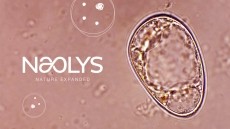Why synthetic ingredients are raising the bar on skincare formulation

In the first of a two-part article, we speak to Dr. Ebru Karpuzoglu, who is an expert in the field of molecular medicine and immunology, as well as the Founder & CSO of skincare brand AveSeena, to find out more about the advantages of using synthetic ingredients, how they stack up against natural ingredients and more details on the sustainability advantages.
CosmeticsDesign-USA: How do you define synthetic ingredients?
Dr. Ebru Karpuzoglu: Synthetic ingredients are chemical compounds or substances that are intentionally created through a controlled chemical process in a laboratory or manufacturing setting. These processes typically involve the transformation of raw materials into the desired compound by various chemical reactions. These ingredients are designed and produced with specific characteristics and properties for various applications in cosmetic and skincare formulations.
CDU: Can synthetic ingredients be created from natural ingredients? And how are naturally-derived ingredients categorized?
EK: Naturally-derived ingredients are sourced from natural materials, like plants, animals, or minerals, and are only subjected to minimal processing to extract or refine them for use in various products. They retain a closer connection to their natural source. While synthetic ingredients are generally created through chemical synthesis, it is indeed possible to create synthetic versions of certain natural ingredients. This involves identifying the key components or chemical structures present in the natural source and then replicating them using synthetic methods. For example, salicylic acid, a common skincare ingredient, can be synthesized from the natural compound salicin, found in willow bark. This illustrates the versatility of synthetic chemistry in enhancing and modifying natural compounds for specific skincare purposes.
This process is becoming more favored to ensure a stable and consistent supply of a particular ingredient or to enhance its purity or functionality for specific applications or to provide sustainability while trying to decrease the impact on natural resources.
CDU: What are the advantages of synthetics, especially in the context of natural ingredients?
While natural ingredients have merits, synthetic ingredients also offer advantages. The message should emphasize the importance of safety, efficacy, and sustainability in skincare products, regardless of whether the ingredients are natural or synthetic.
In the realm of skincare and cosmetics, it’s crucial to understand the benefits of both natural and synthetic ingredients. While natural ingredients have their own merits, it’s equally important to appreciate the advantages that synthetic ingredients bring to the table. It is crucial to dispel the misconception that all natural ingredients are superior and that synthetic ingredients are inherently harmful.
Natural ingredients often resonate with consumers due to their organic origin and the perception of being gentle on the skin. They can indeed be wonderful for skincare, as they frequently contain beneficial compounds like vitamins, antioxidants, and essential oils. However, it’s important to recognize that natural ingredients can vary in quality and efficacy depending on factors such as sourcing, climate, and growing conditions. The consistency of these ingredients can also be influenced by seasonal variations.
On the other hand, synthetic ingredients play a valuable role in skincare products. They are meticulously formulated, ensuring a consistent and stable composition, which can be crucial for product efficacy and safety. Synthetic ingredients are designed to address specific skincare concerns and often undergo rigorous testing to ensure their safety and performance. They can also be a sustainable choice because their production can have a lower environmental impact requiring fewer resources and producing less waste compared to harvesting or extracting natural ingredients. This aligns with the growing need for sustainable practices in the skincare industry.
CDU: What is the main message that should be communicated to support the use of synthetic ingredients?
The message we should emphasize is that the choice between natural and synthetic ingredients should revolve around safety, efficacy, and sustainability. Skincare products, whether they contain natural or synthetic ingredients, must meet stringent safety standards and deliver on their promises. The focus should be on ingredients that are proven to work, and this can come from both natural and synthetic sources.
Additionally, sustainability is a growing concern, and both natural and synthetic ingredient production can be optimized for eco-friendliness. For example, sustainable sourcing and responsible manufacturing practices can be applied to both types of ingredients. It is also important to recognize that not all natural cosmetic ingredients are inherently good, and conversely, not all synthetic ingredients are bad. The quality and safety of an ingredient, whether natural or synthetic, depends on various factors, including its source, extraction or manufacturing processes, and how it is formulated within a product. Natural ingredients may sometimes have limited stability or may change due to environmental conditions, while synthetic ingredients can offer consistency and specific benefits. What truly matters is the careful evaluation of individual ingredients, through testing by producers and the transparency of the brands using them.
I think the focus should be on the overall quality and performance of the product, rather than a rigid division between natural and synthetic ingredients. The goal is to create a well-informed and balanced approach where the emphasis is on the efficacy, safety, and ethical production of the ingredients rather than their origin as well as the products they are used in with sustainability in mind. By embracing a balanced view of ingredients, we can create skincare routines that bring out the best in our skin while being mindful of our environment.
CDU: What are the sustainability advantages? Can moving into naturally derived synthetic ingredients help the environment while increasing efficacy of the products?
Synthetic ingredients can be produced with less environmental impact compared to harvesting or extracting natural resources. By reducing the demand for these resources, we help conserve ecosystems and minimize the depletion of rare or endangered plants, ultimately helping to conserve natural resources. Their manufacturing can often be more energy-efficient, resulting in a lower carbon footprint. Sustainable practices applied during synthetic or naturally derived synthetic ingredient production, such as using renewable energy sources and optimizing production processes, can further reduce environmental impact. Furthermore, synthetic ingredients provide a consistent and stable supply, reducing the pressure on wild populations, natural resources and ecosystems. This is particularly crucial when natural ingredients are susceptible to environmental factors like climate/environmental change or habitat destruction.
Now, when we talk about moving towards naturally derived synthetic ingredients, we are entering an exciting territory that can have positive implications for both the environment and product efficacy. By harnessing natural sources and applying innovative techniques, we can create synthetic ingredients harnessing the benefits of their natural counterparts- basically best of both worlds. This approach can help protect ecosystems by reducing the need for extensive harvesting and can lead to more sustainable ingredient sourcing.
These naturally derived synthetic ingredients can often be tailored to provide enhanced performance, which is excellent news for skincare and cosmetic products. When products are more effective, they tend to require fewer applications - which decreases the skin stress, help reduce waste and the overall environmental impact. This demonstrates a promising synergy between environmental responsibility and the delivery of high-quality skincare and cosmetic solutions.
To read part two, please click HERE.
















